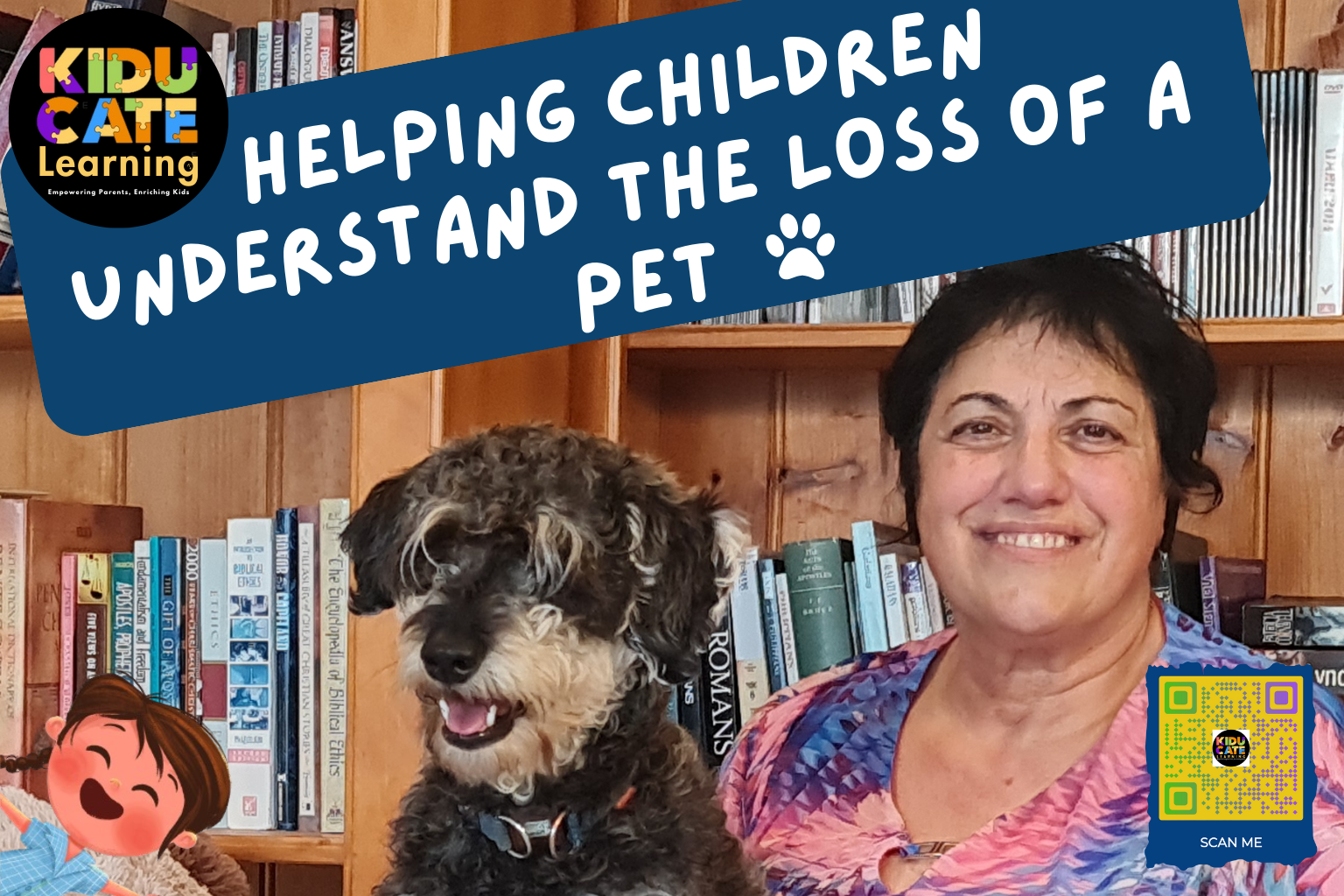Helping Children Understand the Loss of a Pet

How Do You Explain Loss to a Child? A Story About Indi
Early this morning (2nd May 2025), Jo received the kind of news no one is ever ready for. She didn’t have to say a word — her cry said everything: Indi has passed away.
Indi was more than just a pet. She was family. She became part of our story the moment she transformed Lisa’s lounge room into a space filled with unexpected love and occasional chewed-up furniture. When we opened our home to her, she found something she hadn’t had before — space to run, space to play, and a family that adored her.
Though only a year old when she joined us, Indi quickly became our baby. Her spirit was wild, playful, and deeply loyal. She loved adventure (which is exactly why we named her Indi), and every day with her was full of surprise.
Jo’s heartbreak this morning was raw and real. She may face her own challenges, but the size of her heart has never been one of them. Her grief was deep — and in truth, mine was too. We both tried to hold it together, but the room filled with a wave of emotion we couldn’t suppress. If love is measured by the tears we cry, then Indi was loved more than words can say.
Before Jo and I became husband and wife, I never saw myself as a dog person. But Indi changed me. Her antics, her unwavering joy when I came home, her trust — all of it carved a place in my heart I didn’t know existed.
Bella, my granddaughter, and her mum, Lisa, were also deeply affected. Seeing Indi’s still body on my bed was a jarring moment of reality. It was hard. Too hard for little Bella. And it’s in moments like this we ask: How do we help a child understand loss — and begin to heal?
1. Acknowledge Their Grief Without Rushing It
Children grieve in waves. One minute they may be crying; the next, they’re playing. That’s not avoidance — it’s how young minds process loss. Let them feel sad, confused, or even angry. Resist the urge to “make it better” with distraction. What they need most is your presence and understanding.
🧠 Research Insight: According to the Australian Child & Adolescent Trauma, Loss and Grief Network, “Children benefit most from honest, age-appropriate conversations and carers who validate their feelings.”
2. Use Simple, Gentle Language to Explain Death
Avoid euphemisms like “went to sleep” — they can confuse or scare young children. Say what happened in a calm, soft voice: “Indi died. That means her body stopped working, and she won’t be coming back.”
Reassure them that it wasn’t their fault and that they are safe. Clarity paired with kindness builds emotional safety.
3. Create a Goodbye Ritual Together
Whether it’s lighting a candle, drawing pictures, or planting a flower in the pet’s memory, rituals give children a way to externalise their emotions. Invite them to say what they loved about their pet. These shared moments help with healing.
✨ Tip: Let your child choose how they’d like to say goodbye. Empowering them in this way gives them a sense of agency amidst the grief.
4. Share Your Own Feelings — Gently
Children learn how to express emotions by watching us. When they see us cry or speak honestly about sadness, they learn it’s okay to do the same.
Say things like, “I feel really sad too. Indi was special to me. It’s okay for us to cry together.”
5. Keep the Memory Alive
Help your child celebrate the life of their pet. This could be through stories, photos, or a small keepsake box. When children see that love continues even after loss, it helps them understand the depth — not the end — of a relationship.
💛 Try This: Create a “Memory Book” where your child can draw pictures, write (or dictate) their favourite memories, and include photos of their pet.
6. When Grief Lingers: Know When to Seek Help
Most children cope well when given time and support. But if sadness begins to interfere with sleep, school, or joy weeks after the loss, it may help to speak with a child psychologist or grief counsellor.
🔍 Resource: Reach out to local support organisations such as Kids Helpline (Australia) or contact your child’s school counsellor for guidance.
Conclusion
Loss is part of life — but love is the part that stays. By walking through grief together, we teach our children resilience, empathy, and the power of remembrance.
Although Indi's life with our family was short, she added a dimension to our life that was precious and irreplaceable. We love you Indi 🌻
We’ve created a gentle printable to help — no overwhelm, just quiet support: “Saying Goodbye, Holding On: Helping Your Child Grieve Their Pet.”
🎁 It’s free for our subscribers — a small way we can stand beside you in this tender moment.
